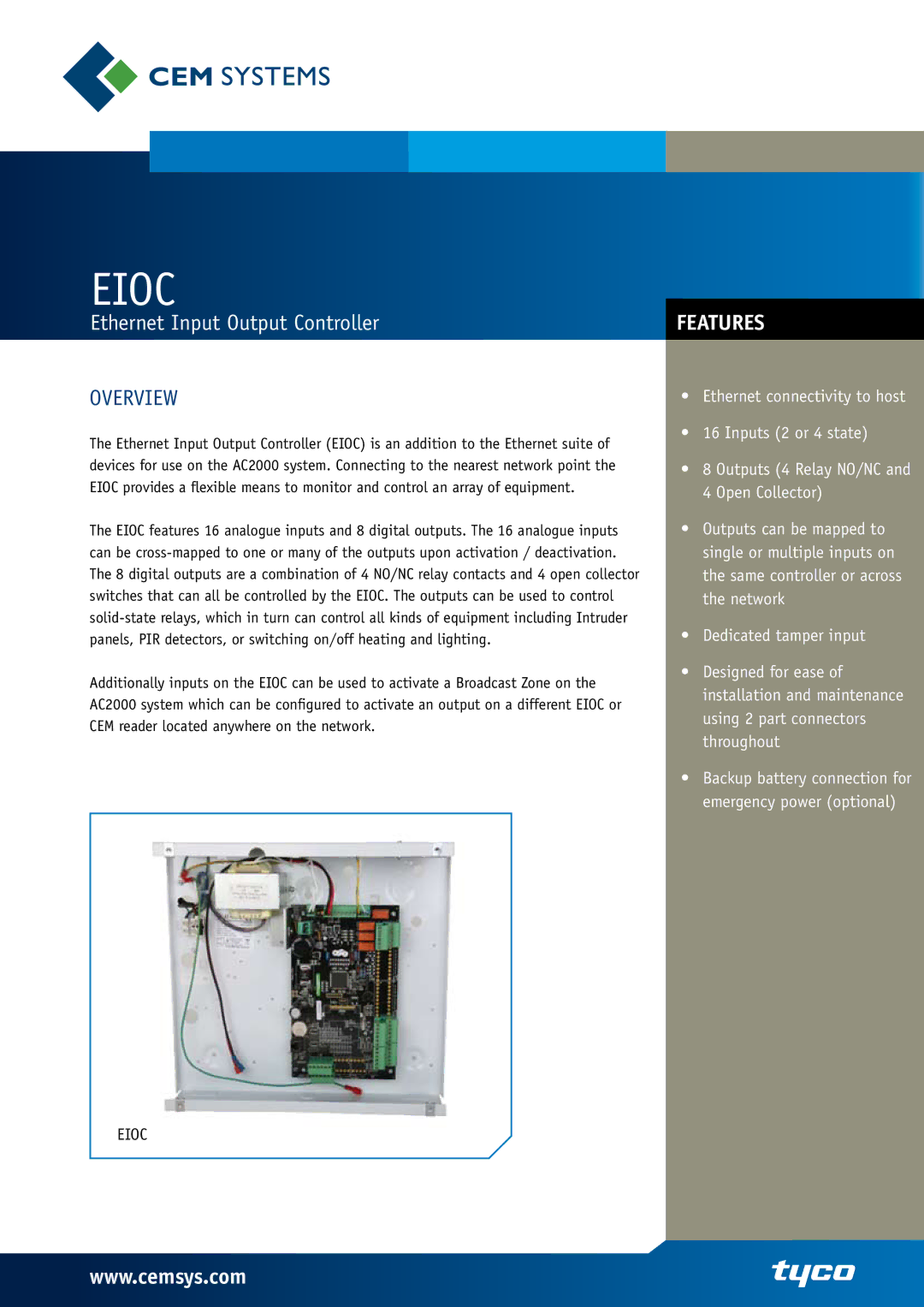EIOC specifications
Tyco Electronic Integrated Operation Center (EIOC) is a cutting-edge facility that serves as a centralized hub for smart building management and global monitoring of security systems. Its design is built around enhancing operational efficiency, ensuring safety, and fostering seamless communication across various systems. Tyco, a prominent name in security and fire protection solutions, has incorporated advanced technologies within the EIOC to enable real-time data analysis and response capabilities.One of the main features of the EIOC is its ability to integrate a multitude of systems, including video surveillance, access control, and fire detection into a single cohesive platform. This integration allows security personnel to monitor and respond to incidents comprehensively, minimizing the response time to critical situations. The platform utilizes a range of technologies, including the Internet of Things (IoT) and cloud computing, which creates a network of interconnected devices that stream data in real-time. This connectivity enables predictive analytics and proactive security measures.
The EIOC is equipped with sophisticated algorithms that analyze data patterns to identify potential security threats before they escalate. By employing artificial intelligence and machine learning, the system not only improves response times but also enhances decision-making processes. Moreover, the facility supports mobile access, allowing operators to monitor systems remotely from various devices, ensuring that security personnel can respond swiftly no matter their location.
Additionally, the EIOC boasts a user-friendly graphical interface, which simplifies monitoring and control of integrated systems. This interface empowers operators to manage security operations effectively, fostering an environment of collaboration and efficiency. Another critical characteristic is the emphasis on scalability; the EIOC can easily adapt to the growing needs of an organization, accommodating new technologies and increasing numbers of devices without significant overhauls.
The Tyco EIOC also places a strong emphasis on compliance and reporting, ensuring that organizations can easily adhere to regulatory requirements. Automated reporting features provide insights into security metrics and operational performance, allowing businesses to assess the effectiveness of their security infrastructure continuously.
In summary, Tyco’s Electronic Integrated Operation Center exemplifies the convergence of advanced technology and innovative security solutions. Its robust integration capabilities, real-time data handling, and user-friendly operations make it a vital component for modern safety and security management, capable of evolving alongside the needs of contemporary organizations.

